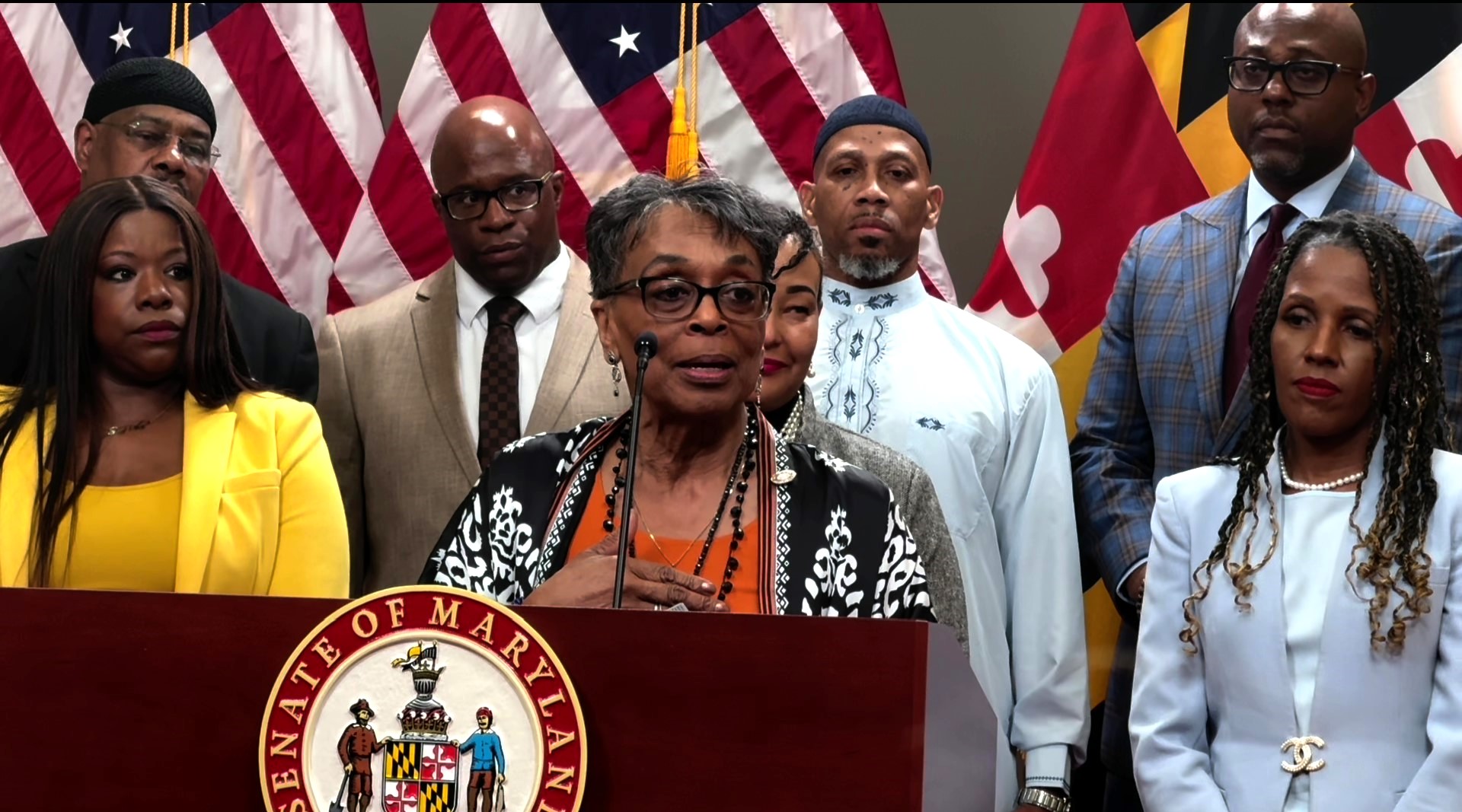Civil Rights Advocates, Residents Continue Calls for Second Majority Black Baltimore County Council District

Civil rights advocates and residents again slammed the Baltimore County Council’s redistricting proposal for including just one majority Black council district during a meeting of the council Tuesday evening.
Under the currently proposed council map, five of seven districts would be majority white and another would have a 46.17% white plurality. Just one district would be majority Black at 72.59%, according to data released by the Baltimore County Council.
Just over 30% of county residents are Black and roughly 45% are people of color, according to U.S. Census data.
Civil rights groups including the Baltimore County NAACP and the American Civil Liberties Union of Maryland have criticized the council’s drawing only one majority Black district among seven — and many who testified at a virtual meeting Tuesday called on council members to draw a second majority Black district.
Currently the county has only one majority Black council district, drawn in 2001 after a push from civil rights activists. Since that district was drawn, residents of the lone majority Black district have elected a Black council member in every election since it was created, while majority white districts have elected white council members. Baltimore County Council Chair Julian E. Jones Jr. (D) remains the only Black council member.
Baltimore County resident Daniel Golombek said the county’s redistricting proposal is “essentially the same as the last decade” and doesn’t reflect the jurisdiction’s growing diversity.
Civil rights advocates and some state lawmakers, including Sen. Charles E. Sydnor III (D-Baltimore County) have said the current redistricting proposal “packs” Black voters into Jones’ 4th District, violating the federal Voting Rights Act. That federal law bans minority vote dilution by cracking, or “fragmenting the minority voters among several districts where a bloc-voting majority can routinely outvote them,” according to the U.S. Department of Justice, or by “packing them into one or a small number of districts to minimize their influence.”
While the ACLU of Maryland and Baltimore County NAACP have submitted several county council maps that include two majority Black districts, Jones has argued that those maps cannot garner the five votes necessary to be approved.
In a YouTube video entitled “Why Baltimore Co. Council Can not create two African American Majority Districts” posted Sunday, Jones argued that creating two majority Black districts would create non-compact districts. He also argued that splitting his 4th District, which would be 72% Black under the proposal, to create two districts with smaller majorities wouldn’t guarantee a Black county council member.
“The members of my district do not want to be split in half,” Jones said. “They don’t want to take the chance or the possibility that there could possibly be no African Americans on the county council.”
Four Democrats and three Republicans now fill the seats on the Baltimore County Council. Jones said in a November interview that he believed two majority Black districts would be “justified” based on the county’s population, but said council members found it difficult to do so without splitting up communities.
Israel C. “Izzy” Patoka (D) said Tuesday he thought the maps submitted by the ACLU of Maryland and Baltimore County NAACP were “well-intended” but added that he hasn’t seen a redistricting proposal that was “perfect.”
Sonia Shah, a Baltimore County resident who has written books on human rights, said any redistricting proposal will split some communities, and urged council members to adopt a map with two majority Black districts.
“Communities are connected to each other,” Shah said. “They’re not islands. So any district lines will divide some community or another by some definition of community. So it’s true that there may be no perfect map, but the ACLU of Maryland, NAACP of Baltimore County and others have drawn several maps that may be as imperfect as the council map, but unlike the council map, they provide Black voters a fair chance at electing candidates of their choice.”

An alternative plan for Baltimore County Council districts from the ACLU of Maryland and Baltimore County NAACP includes two majority Black districts. Provided by ACLU of Maryland.
Ryan Coleman, president of the Randallstown NAACP, said the proposed map splits majority Black communities including Milford Mill, Owings Mills and Lochearn.
“The only communities that are being affected are minority communities,” Coleman said.
Coleman said drawing a 4th District with a more than 70% Black majority means that Black voters in other districts lose their voice in county council elections.
“Do other African Americans in the 1st and 2nd districts have the opportunity to choose their candidate of choice?” Coleman asked. “No. A person of color has never won a councilmanic election when the voting majority is white.”
Nancy Davis, a county resident, said she was concerned that splitting the 4th District to create two council districts with smaller Black majorities would weaken Black voters’ power in that district.
“If you separate us, you divide us,” Davis said.
The marathon meeting was held as a regular county council work session. County council members dealt with other business before moving to redistricting at 6 p.m. Public testimony continued past 9 p.m., and the lion’s share of those who testified urged county council members to draw two majority Black districts.
On Tuesday morning, the Maryland Republican Party sent out an email in support of the maps proposed by the Baltimore County Council, writing that council members “proposed a fair and compact map which keeps Republican districts intact and even makes them stronger.”
An initial map proposed by the Baltimore County Redistricting Commission earlier this year also included just one majority Black district.
Council members amended the redistricting commission map last month to unite Towson in a single district rather than splitting it into multiple districts, but they didn’t create a second majority Black district.
An interactive version of the currently proposed council map is available online.
The Randallstown NAACP and ACLU of Maryland have each said they will take the redistricting battle to court if the county council votes to enact the current proposal.
“Both the Baltimore County Redistricting Commission map and the Baltimore County Council’s new proposed map violate the Voting Rights Act, but the new one is even worse, packing even more Black voters into a single district,” the ACLU of Maryland wrote in an emailed statement in November. “If the County does not create a second majority-Black district, which it can easily do, the ACLU will file suit in partnership with local groups and voters.”
The council must finalize districts for the next decade by Jan. 31, according to the county charter.




 Creative Commons Attribution
Creative Commons Attribution